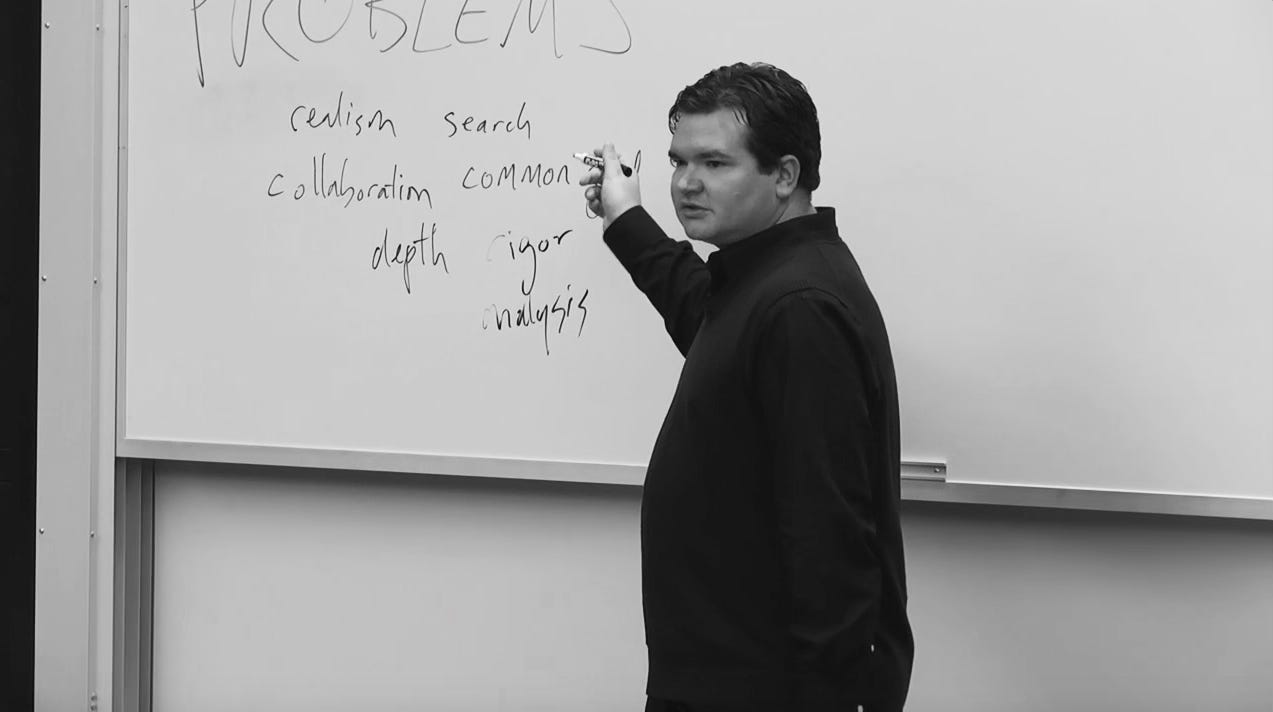Standing in the space between
Finding insights between problems and solutions
There’s an exercise I sometimes use to kick off workshops. I write “Problems” and “Solutions” on the whiteboard, then ask people which word they prefer. “Solutions” is usually more popular, but “Problems” always has fans, and when they start to make their case, some people even switch sides.
While a focus on solutions has advantages like optimism and pragmatism, a focus on problems can also lead to benefits like a broader perspective, a focus on the common good, and even greater creativity. After all, most problems have a wide range of solutions, so if you are willing to keep iterating, you’ll get more and more ideas.
I use this exercise because most people aren’t used to standing in the space between problems and solutions. Yet I find that it’s where I’m most comfortable. I get most excited at work when I look out at a group of people who are highly committed to a problem but still open to new ideas. Or when I hear a student say, “You know, that solution makes me wonder if we’ve been looking at the problem the wrong way the whole time.”
Yes! The insights come from the space between.
The helping professions often need this kind of guidance because years of professional training and experience have taught them that they are only useful when they provide solutions. Nurses, social workers, and other helpers are told to be positive, be constructive, and “just do something.” In workshops with these groups, I spend a lot of time getting everybody to slow down and just play with the problem, letting solutions emerge more organically.
One of my favorite uses of this exercise had a similar goal. For several years, I taught at a gathering called 10.10.10, where successful startup CEOs mingled with experts in public health issues in search of market-based solutions. Startup folks are known for moving extremely quickly, so I used the exercise to encourage them to slow down and get to know the problems before they started building. We used a version of my Social Lens Framework to get to know aspects of the problems one by one. The framework provided a common language that could be spoken not just by MBAs but also MDs, RNs, and MSWs.
Some of my favorite insights into health issues came out of those sessions. In particular, I remember how a group working on chronic disease outlined the differences between the world of the healthy and the world of the sick, then wished for a “portkey” that would help people cross between them. The “portkey” was not a solution in itself — if anyone had started sketching it out, I would have been disappointed.
Instead, it was a concept that illustrated the gap in modes of decision-making in different times of life. The better the CEOs got to know that gap, the more opportunities they would find. And I think that’s true of anyone willing to stand in the space between problems and solutions.


In the world of quantum physics the spaces between (the gaps) and the edges tends to be where the most fascinating stuff is happening. I like your focus on gaps. And language can sometimes be so isolating, the jargon of a particular profession that only allows entry to that group of professionals and becomes inaccessible to others--tends to be felt as "elitist" by those without access. Yeah, sometimes we need to be using more inclusive language--but not always...
I really appreciate this distinction. I find in my work that most people believe the solutions space is malleable but think the problem space is fixed. You’re right to show them it’s all up for grabs.